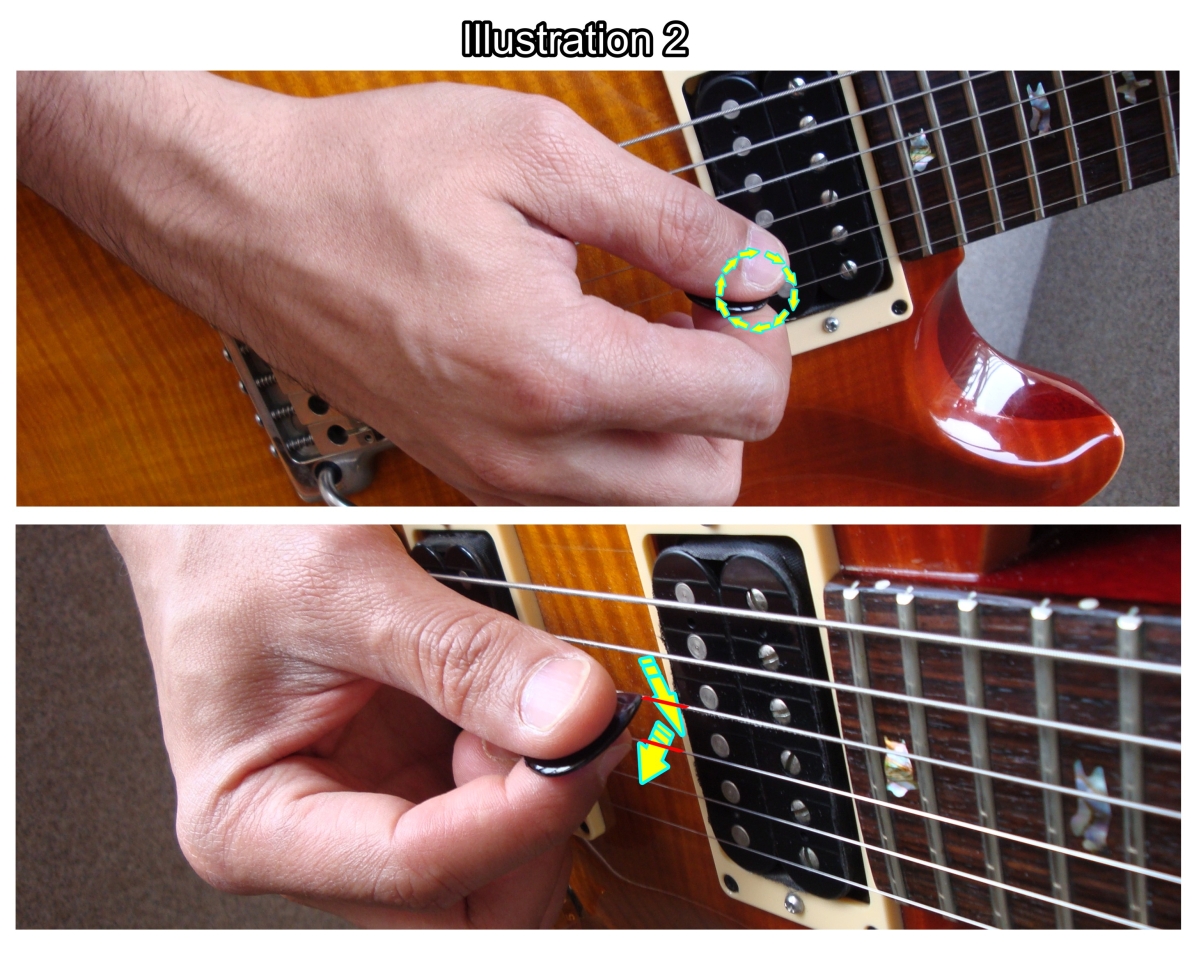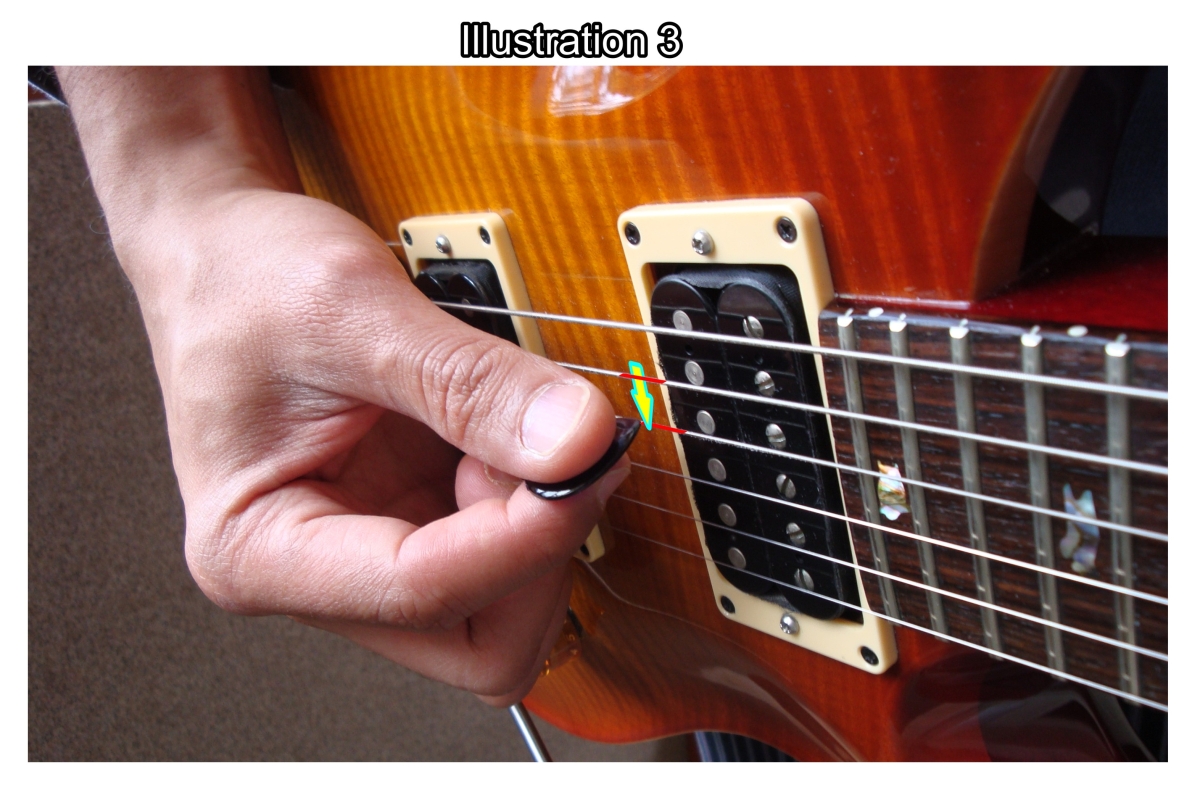When I was a teenager, I landed the dream job for any aspiring guitarist. Though the job was a one concert gig, it didn't matter as I got to be the roadie for one of the most famous bands back in the late '80s / early '90s in Colombia - "Kraken".
It was the only local band I knew that was really big and famous, so as soon as I had the chance during the sound check, I bombarded the guitar player, Hugo, with all my questions about how to play fast scales. The one thing that stuck with me was his advice to "play circles with your pick". I took the advice to heart and started to work on "playing circles with the pick". Somehow I misunderstood what Hugo meant and ended up doing something a bit out of the ordinary, but I never realized this until many years later when I saw the great Frank Gambale explaining the economy picking technique. That day I found out by pure coincidence that I was doing what Mr. Gambale had developed as a new unorthodox technique to play fast.
Usually guitar players develop a technique called alternate picking which consists of moving the pick in an alternating DOWN-UP, DOWN-UP, DOWN-UP, DOWN-UP fashion. Economy picking, however, as the name indicates, it is about economy. You can play more notes with less picking. More specifically, you can play two notes with one pick motion: DOWN-UP, DOWN-DOWN-UP, DOWN-DOWN-UP, etc. It works with scales with three notes per string, and it won't work on scales with two notes per string, like the common pentatonic scale. I will illustrate a way to play the major scale that works well for economy picking as most people are familiar with playing the major scale using a different form. I'll be using the G major scale for the examples.

This exercise involves going through the complete major scale two and a half times.
With economy picking, after you play the last note of your sequence of three notes per string, you start the next sequence picking in the same direction that you left off, using the same motion. Therefore, if you play three notes on one string, you should play DOWN-UP-DOWN. Immediately following this, the next string is also going to start with a DOWN motion, just like the last note played on the adjacent string.
This works on every string the exact same way, so every string should be played DOWN-UP-DOWN. This also helps to develop muscle memory because you will be doing the exact same thing on every string, which is easier than playing three notes on some
strings and two notes on other strings.
You might find that breaking the alternate picking habit is difficult, and most likely you will notice that your hand will still hesitate when going from one string to another. There are two tricks that can help you eliminate the hesitation.
For people who are not used to doing this tiny sweep (yes, it is a mini sweep on two strings) the picking hand will try to stop before hitting the string below. You have to remember that the key thing here is to be able to hit two notes on two different strings with one motion, so if you try it and your hand keeps stopping between the two notes, you should try to visualize drawing a circle with your pick.

Try to play three notes on one string using the following sequence: DOWN-UP-DOWN. Make sure that when you play the last 'down' that you do not end with your pick in the air, but instead end by supporting it on the string below. In other words, the string below should be where the pick will rest after the last (3rd) note on the string before.
"Drawing a circle with your pick" and "resting the pick on the string below" have helped a lot of my students get rid of that little hesitation between the strings.

So far we have the scale going down from the 6th string to the 1st string, but let's not forget that you have to be able to play it back up. Economy picking will work the same, but it will be backwards. The picking sequence will be UP-DOWN-UP, UP-DOWN-UP, UP-DOWN-UP, etc., repeating on every string.
Here is a complete descending and ascending scale with picking instructions.

There is nothing wrong with alternate picking, however, I encourage you to always try something new and explore how you can expand your own musicality. In a world full of excellent musicians, only the different ones shine.
Juan Coronado, a native of Columbia, is a guitarist whose obsession with the electric guitar resulted in several albums, a number one radio hit, countless live shows, and an abundance of powerful songs.
In 2005 he released his first solo album, "Renewal", and Guitar Player Magazine chose Juan as one of the Top Ten Guitar Heroes in both 2005 and 2007. He's recently released "Ultrasonico", a new album with 16 songs.